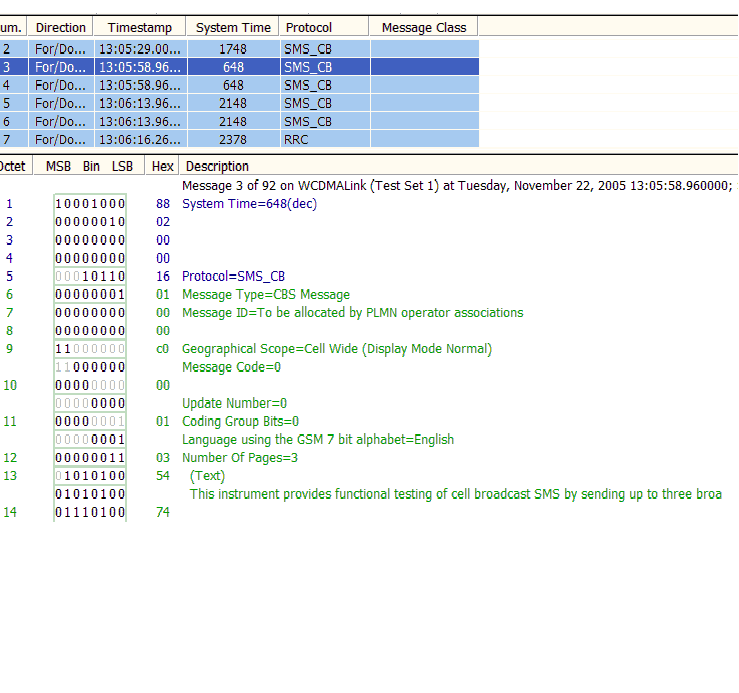Logging SMS Messages
Last updated: January 15, 2009
This section is only applicable to the lab applications.
You can use the Wireless Protocol Advisor (WPA) to log SMS messages.
SMS Logging Control
The test set gives you access to the protocol layers necessary to allow you to observe the SMS cell broadcast and point-to-point messages. You can capture all the messages exchanged between either the GMM or MM and these protocol layers:
SMS Message Support
The messages in the following tables are examples of messages related to SMS. The table indicates whether each is supported in the test set. There may be more messages supported by the test set or by the Wireless Protocol Advisor. In addition, certain parameters in these messages may not be supported.
| Messages | Supported |
|---|---|
| SMS_CP_DATA | Yes |
| SMS_CP_ERROR | Yes |
| SMS_CP_ACK | Yes |
| SMS_RL_MS2N_DATA | Yes |
| SMS_RL_N2MS_DATA | Yes |
| SMS_RL_MS2N_ERROR | Yes |
| SMS_RL_N2MS_ERROR | Yes |
| SMS_RL_MS2N_ACK | Yes |
| SMS_RL_N2MS_ACK | Yes |
| SMS_RL_MS2N_SMMA | Yes |
| SMS_TP_DELIVER | Yes |
| SMS_TP_SUBMIT_RPT | Yes |
| SMS_TP_STATUS_RPT | Yes |
| SMS_TP_DELIVER_RPT | Yes |
| SMS_TP_SUBMIT | Yes |
| SMS_TP_COMMAND | No |
Setting Up the Wireless Protocol Advisor (WPA)
You can use the Wireless Protocol Advisor (WPA) to log the messages exchanged between the test set and the mobile station during SMS procedures. This tool provides a means to evaluate the mobile station's performance and to troubleshoot problems.
You can set up the WPA to capture and display as much or little information as you want. For this example, the logging filter is defined to capture only SMS protocol messages. The view filter is configured to only display the CP-Data messages. This allows you to view only the messages that contain the SMS message contents being exchanged between the mobile station and the test set.
Test Set Message Filter Setup
The test set filter is useful for limiting the amount of data sent over the LAN connecting the test set and the WPA. In the example below, all messages are sent from the test set to the WPA.
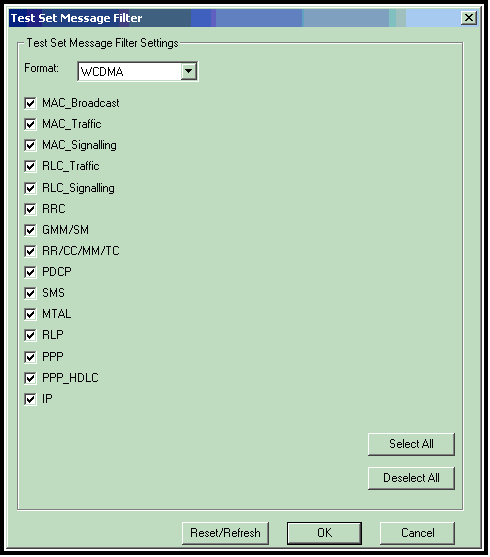
All filters are accessed from the Measurement Setup view. This can be accessed from the menu bar by clicking:

WPA Logging Filter Setup
The logging filter is useful for limiting what messages get captured in your log. Using this filter, you can choose to only log certain types of messages from certain protocol layers. In this example, we are using the logging filter to limit the captured log to SMS protocol messages.
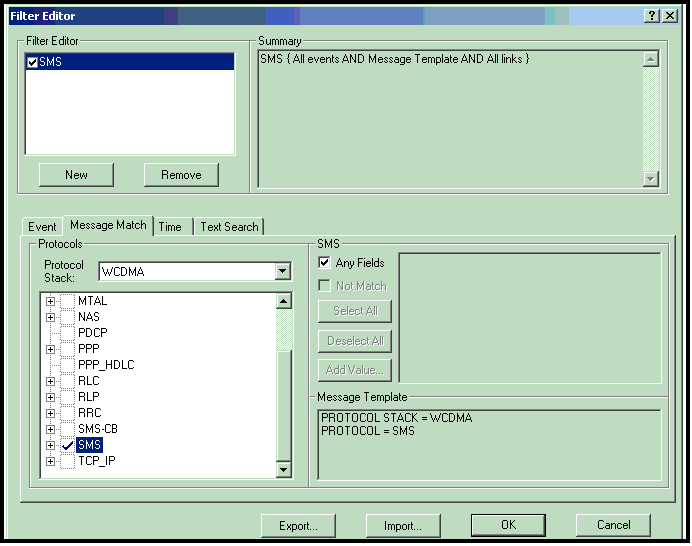
WPA View Filter Setup
The view filter has no effect on what messages are captured. It simply limits the messages that are visible on the WPA's traffic overview. The view filter can easily be enabled and disabled by right clicking your mouse in the traffic overview and selecting
View Filter Enabled
from the menu that appears.
In the following view filter example, the messages in the traffic overview are limited to the CP-Data messages.
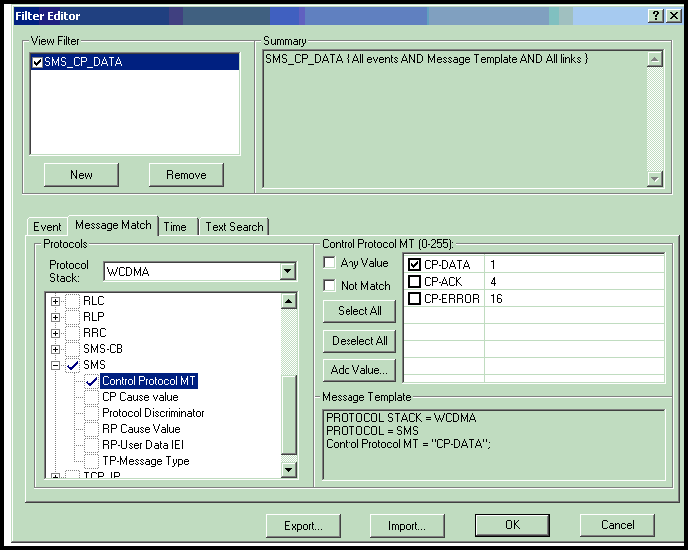
SMS Message Log
For the step-by-step procedure for setting up the test set to capture this log, refer to Mobile Originated Point-to-Point Message Transfer .
The captured log allows you to determine exactly what is being exchanged between the test set and the mobile station. In this example, an SMS message was sent from the test set to the mobile station. You can look in the decode of the captured message to verify all the parameters associated with that message. The following data is only a portion of the decode belonging to the captured message. In this data, you can see the text message that was sent to the mobile station.
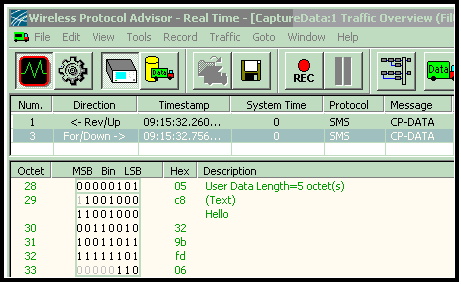
Cell Broadcast Message Log
Keysight's Wireless Protocol Advisor (WPA) allows you to capture the cell broadcast messages sent from the test set to the mobile station, and can be used to troubleshoot the handling of received messages. The figure below is a protocol log captured from WPA when the Cell Broadcast Service has been started and the repetition period is set to 15 seconds. The test set sends the message in segments governed by the size of the RLC block. The message decode of the selected portion of a message (dark blue) is shown in the bottom portion of the figure. The message decode shows several parameters, including the number of pages, message ID, geographical scope, and the content of the message, which is a three page text message. The following data is only shows a portion of the decode belonging to the captured message. These portions show the 3-page text message divided into pages. Piecing these pages together combines to make the following message:
This instrument provides functional testing of cell broadcast SMS by sending up to three broadcast messages to the device under test. Two fixed text messages and user defined text or binary/UCS2 messages are available for selection. The second fixed message spans multiple pages.
